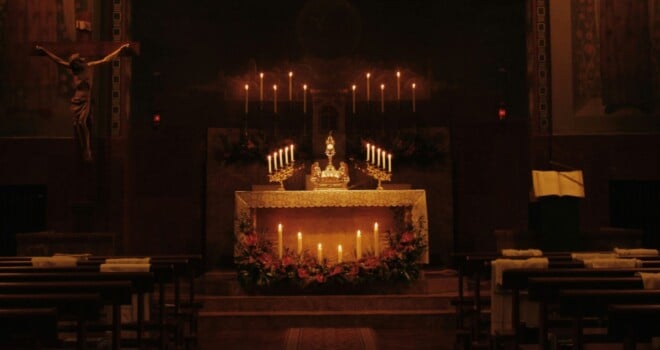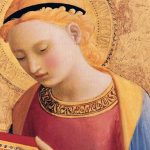The Forty Hours Devotion, or “Quarantore,” is a beloved and profound Catholic tradition centered around Eucharistic adoration. It involves continuous prayer and reverence before the Blessed Sacrament, typically lasting forty hours, and finds its roots in the deep reverence Catholics have for the Eucharist as the true body and blood of Christ. The devotion is a response to the call for prayer, reflection, and gratitude, inviting the faithful to unite in an extended period of worship and spiritual renewal.
Origins and History
The Forty Hours Devotion emerged in the 16th century in Italy, most notably within the Archdiocese of Milan. It is attributed to St. Philip Neri, the founder of the Oratory, who, in 1527, instituted this devotion as a way to offer a focused period of prayer in response to the devastating threat posed by the plague. Recognizing the need for divine intervention, Neri encouraged the faithful to spend forty hours before the Eucharist in adoration, praying for mercy and relief.
The devotion gained momentum, particularly during the time of the Counter-Reformation. In the wake of the Protestant Reformation, the Catholic Church sought ways to reinforce and deepen devotion to the Eucharist as the central sacrament of the Church. The Forty Hours Devotion provided a concrete way for the faithful to express reverence for Christ in the Eucharist while also serving as an opportunity for communal prayer, penance, and spiritual renewal.
The Significance of Forty Hours
The number forty holds rich biblical significance, often associated with periods of trial, purification, and preparation. In the Old Testament, Moses spent forty days and nights on Mount Sinai, receiving the Ten Commandments (Ex. 34:28). Similarly, the Israelites wandered in the desert for forty years before entering the Promised Land (Nm. 14:33-34). In the New Testament, Jesus fasted and prayed for forty days in the wilderness, preparing for His public ministry (Mt. 4:1-2).
Thus, the Forty Hours Devotion draws from this biblical symbolism, using the number forty as a means of inviting Catholics into a time of spiritual purification, reflection, and preparation for deeper communion with God.
Structure of the Forty Hours Devotion
Forty hours might seem like a great deal of time, but the layout comes with a lot of practical sensibility. Although the structure of the Forty Hours Devotion can vary from parish to parish, it typically involves a continuous period of Eucharistic adoration for forty hours. The devotion often begins with a solemn opening liturgy, which may include the chanting of hymns, prayers of praise, and the exposition of the Blessed Sacrament. Once the Eucharist is placed in a monstrance, the faithful are invited to spend time in prayer, reflecting on the mystery of Christ’s presence in the sacrament.
(Did you catch that? The entire forty hours is not up to one person to complete in a straight run. I just had to point that out to anyone reading this who may have been thinking otherwise.)
But the forty hours is still purposed to be uninterrupted. During the forty hours, the Blessed Sacrament is never left unattended. Some parishes organize shifts of adorers to ensure that there is always someone present to offer prayers and reverence before the Eucharist. Others may have various forms of prayer and devotion throughout the hours, such as Scripture readings, recitations of the rosary, or opportunities for confession and spiritual direction.
The devotion often concludes with a closing liturgy, during which the Blessed Sacrament is returned to the tabernacle, accompanied by prayers of thanksgiving and a final blessing. In some traditions, the Forty Hours Devotion is observed on specific feast days, such as the feast of the Blessed Sacrament, Corpus Christi, or the Feast of Christ the King, though it can be celebrated at any time of the year.
Theological and Spiritual Dimensions
The Forty Hours Devotion is not merely a practice of external reverence; it is a deep, transformative experience for those who participate. At its core, the devotion is an act of love and worship of Jesus Christ present in the Eucharist. As Catholics believe, the Eucharist is not merely a symbol or a reminder of Christ’s body and blood but the actual, real presence of the Lord. Thus, the Forty Hours Devotion offers the faithful an opportunity to spend extended time in the presence of Christ, offering prayers of thanksgiving, petition, and adoration.
One of the central theological elements of the Forty Hours Devotion is the emphasis on the Eucharist as the source and summit of the Christian life. In this time of focused adoration, Catholics are called to deepen their relationship with Jesus in the sacrament, growing in love for Him who gave His life for the salvation of the world. The devotion also provides an opportunity for personal reflection on the central mystery of the faith—the Passion, death, and resurrection of Christ—and invites participants to offer their lives in union with His sacrifice.
From a spiritual perspective, the Forty Hours Devotion is a time of grace and healing. Many Catholics have testified to experiencing a profound sense of peace, renewal, and closeness to God during their time in adoration. It provides an opportunity for the faithful to quiet their hearts and minds, allowing them to encounter Christ in a deep and personal way. It is a time of spiritual purification, as participants are invited to examine their consciences, seek forgiveness for their sins, and renew their commitment to following Christ more faithfully.
Modern Practice and Devotion
Though the Forty Hours Devotion was once primarily observed in larger parishes and cathedral churches, it has experienced a resurgence in many areas of the world. Many dioceses and parishes today continue the tradition of Forty Hours Devotion, either as an annual event or on special occasions. Some have even adapted the devotion for contemporary settings, incorporating modern forms of prayer such as praise and worship music, youth gatherings, or family-friendly events to engage a broader audience.
In a world increasingly characterized by noise, distraction, and busyness, the Forty Hours Devotion offers a much-needed respite—a sacred time set apart for encountering the presence of God. Whether experienced in a communal setting or as part of a personal retreat, the Forty Hours Devotion is an invitation to rediscover the power and beauty of the Eucharist, to deepen one’s spiritual life, and to grow in faith and love for Christ.
Whether observed in the quiet of a small chapel or during a vibrant parish celebration, the Forty Hours Devotion continues to serve as a spiritual renewal for all who participate, drawing them closer to the Eucharistic heart of the Church.
Photo by Francesco Alberti on Unsplash














